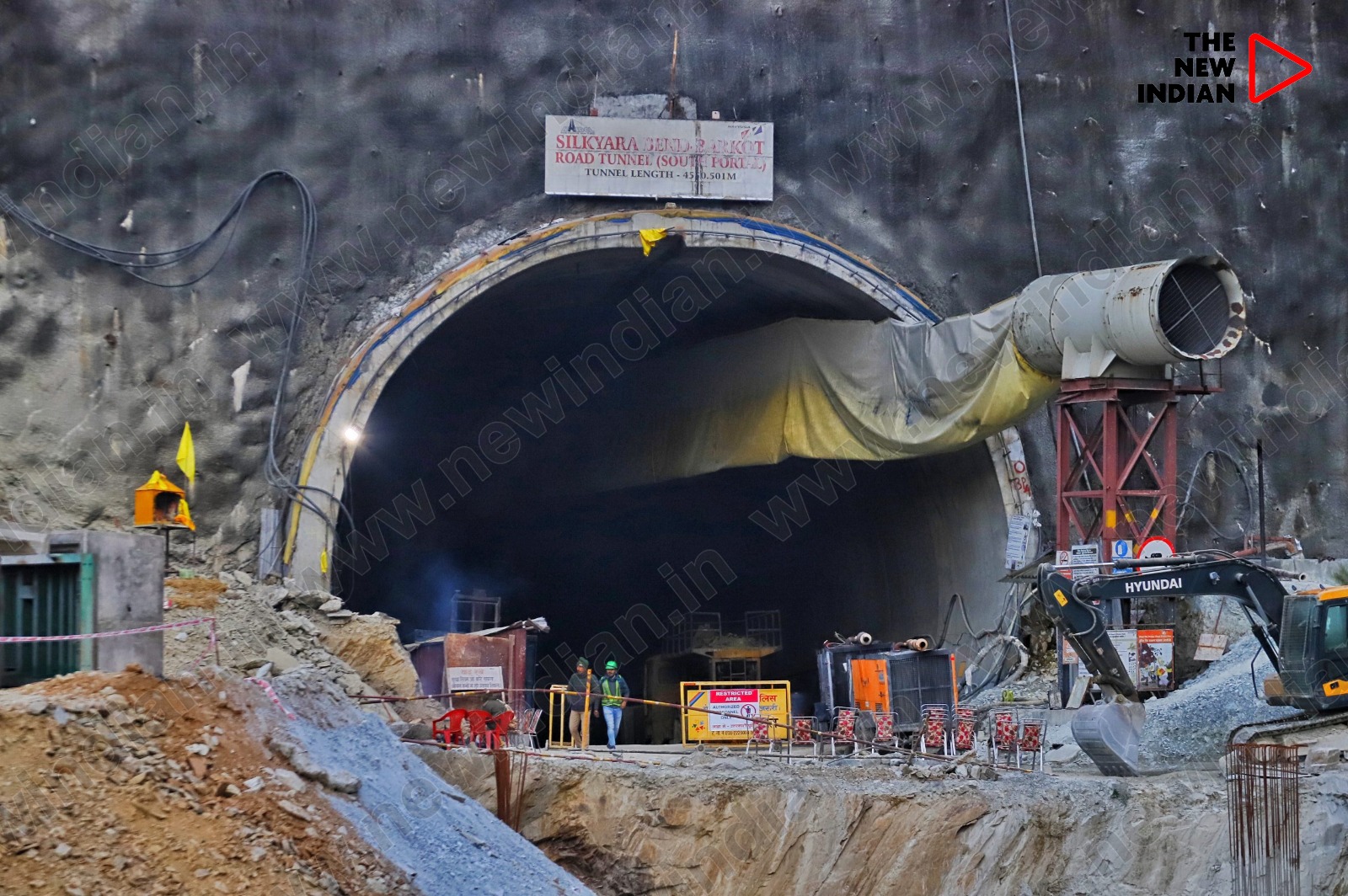NEW DELHI: On Tuesday, rescue teams successfully drilled through the 60-metre expanse of debris in the collapsed Silkyara tunnel. The National Disaster Response Force (NDRF) members accessed the steel chute, which was inserted into the drilled passage in the preceding days, to systematically bring out the trapped workers individually.
After a challenging 17 ordeal, pipes were finally installed in the last section of the collapsed Silkyara tunnel, paving the way for the rescue of the 41 trapped workers. Following the established procedure, each worker reclined on a wheeled stretcher, drawn out by rescue personnel using ropes. This anticipated process took approximately two to three hours.
Following multiple setbacks caused by the breakdown of the auger machine from the US, the final phase of the rescue operation was executed by “rat miners.” These miners successfully completed the drilling process, clearing away all debris to facilitate the installation of pipelines and the subsequent evacuation of the trapped workers from the collapsed tunnel.
What Is Rat Mining?
Rat-hole mining, prevalent in Meghalaya, is a manual drilling method conducted by proficient workers. This technique involves the excavation of narrow pits in the ground, generally designed to accommodate only one person at a time.
The term “rat hole” specifically denotes these slim pits dug into the ground, typically allowing just enough space for an individual to descend and retrieve coal.
Following the excavation of the pits, the miner descends into the holes using a combination of ropes and bamboo ladders. This approach is primarily employed for coal extraction and is widely recognised as extremely perilous. In numerous countries, it is prohibited due to the rising instances of miner fatalities resulting from factors such as asphyxiation, oxygen deprivation, and hunger.
Another variant of rat-hole mining involves creating a rectangular opening, ranging from 10 to 100 square metres. Through this opening, a vertical pit is dug, reaching depths of 100 to 400 feet. Once the coal seam is located, tunnels of rat-hole size are horizontally excavated, providing channels through which workers can retrieve the coal.
Why Is Rat-Mining Banned?
The rat-hole mining technique has encountered significant censure owing to its perilous work environment, environmental degradation, and a multitude of accidents resulting in injuries and fatalities.
Specialists have expressed that these mines are generally unregulated, and devoid of safety measures like adequate ventilation, structural support, or protective equipment for the workers. This results in a hazardous environment for those involved in rat-hole mining. Furthermore, mining activities contribute to land degradation, deforestation, and water pollution.
Also Read: PM expresses gratitude to Kedarnath and Badrinath for saving 41 trapped workers
In 2014, the National Green Tribunal (NGT) imposed a ban on this practice, and the ban was upheld in 2015. The NGT said, “It is also informed that there is umpteen number of cases where by virtue of rat-hole mining, during the rainy season, water flooded into the mining areas resulting in death of many individuals including employees/workers.”
Alternative techniques employed for rescue of workers:
Vertical Drilling: Vertical drilling involves using a boring machine to excavate straight down from the ground using electrical tools and equipment. In the Uttarakhand tunnel collapse scenario, a vertical drill was employed to bore into the ground, and an 800-mm pipe was inserted to facilitate the extraction of the trapped workers.
Auger mining: Auger mining or horizontal mining involves a horizontal auger machine or a directional drill where a specialised tool is crafted for drilling horizontal bores or creating underground tunnels without disrupting the ground. These machines find application in the installation of water and gas pipes, as well as tunnel excavation. Nevertheless, in the Uttarakhand tunnel collapse incident, the auger machine proved ineffective in releasing the trapped workers. It encountered metal obstructions and eventually malfunctioned to a point where it could not be repaired.

